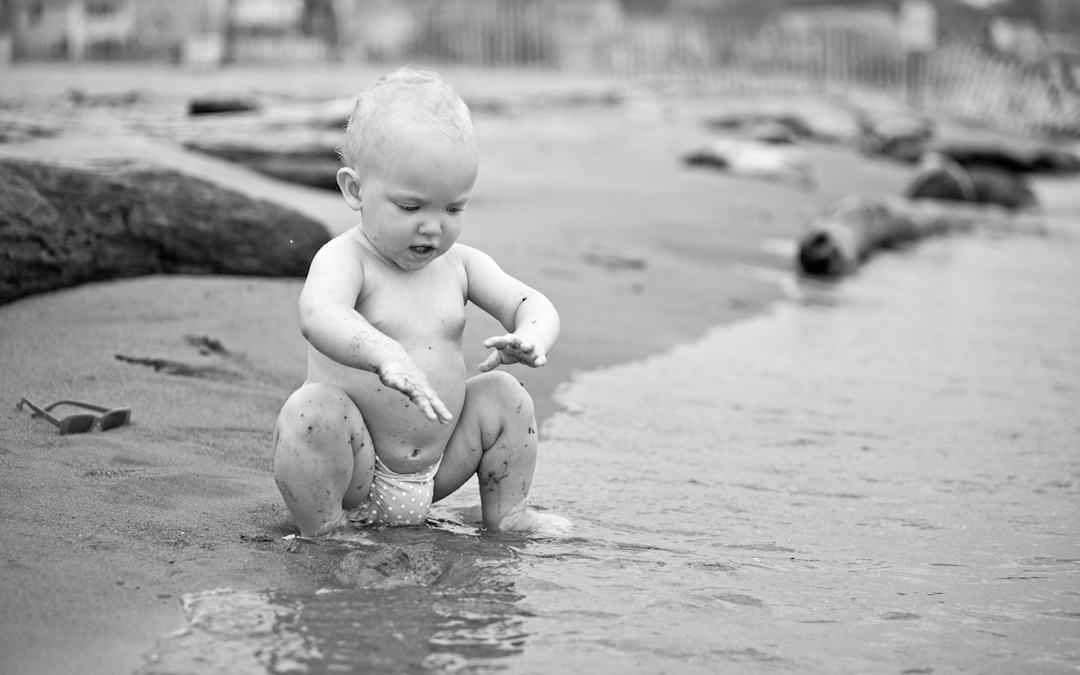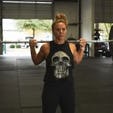Tip #1. Don’t Rush Walking
Although it is commonly portrayed as some sort of a race to prove genetic supremacy (especially on social media), the onset of motor capabilities in children including rolling, crawling, walking, running, climbing, etc, can occur over a vast timeline in normal development. If your child gets up and walks early, this in no way will translate into superhero capabilities in the future (sorry, but it’s true).
Similarly, if your child never gets up on all fours to crawl, but instead finds an alternative way to ambulate (the ‘butt scoot’ is a common one), this by no means indicates that your child’s motor development is abnormal. So long as children are meeting their milestones, there are a wide variety of solutions that their little nervous systems can utilize in order to achieve the same goals.
In light of this, parents should be careful not to try to force the issue by, for example, insisting that their child walk as soon as he’s are able to stand. This would include the all too common act of holding his hands as he clumsily puts one foot in front of the other in some sort of fake walking motion in order to impress your friends.
Many musculoskeletal experts agree that there is great importance in the steps taken when progressing from rolling, to crawling, to bipedal posture. For example, the act of crawling (or other types of ground based locomotion) is thought to help in the development of normal spinal curvatures; the lack of which can arguably lead to biomechanical problems later in life. Further, it can be argued that the act of crawling may train/improve the function of the sense receptors in the shoulders, arms, and hands.
Therefore, as long as milestones are being met, let your child’s nervous system figure it out on his own time.
Tip #2. No Shoes, No Socks!
Staying on the topic of walking, another common mistake is for parents to put their children in shoes the first chance they can get. The fact is that shoes were not part of the evolutionary process that shaped and honed Homo sapiens.
In fact, from an evolutionary time scale, the invention of shoes occurred only a brief second ago. That’s far too recent to expect suitable adaptations in our species to occur. This fact is arguably the reason for the current commonality of various foot and lower limb conditions that I all too frequently see limping into my office.
As noted by O’Keefe (2011) “shoes, often the more expensive ones, can partially cast or splint the foot, causing atrophy of musculature; shortening and stiffening of tendons and ligaments in the feet, ankles, and lower legs; and predisposition to common overuse walking and running injuries including plantar fasciitis, ankle sprain, Achilles tendonitis, hamstring tears, and lower back pain.”
Further, there are countless numbers of sense perception organs located in the feet that are constantly relaying information to our central nervous system (brain and spinal cord) regarding the position of all of the tiny joints found in the feet.
These signals help to hone nervous system function to be able to adapt to the many variables present during upright gait as we traverse constantly changing surfaces and balance challenges. When unused for prolonged periods, as is the case when we ‘muffle’ their signals with shoes, these receptors will cease to function properly and can negatively alter nervous system development.
In my household, we employ the “no shoes, no socks rule.” That means that as soon as the little ones step into the house…shoes and socks are removed. We also take this one step further and insist on the same rule when they are playing on our property (of course we must be diligent to ensure there are no harmful objects on the lawn).
Tip #3. Pick It Up With Your Feet
Number three also looks to ensure proper development of the feet (can you tell that I find this important?). At one time, not so far back in our evolutionary story, you will find that our lineage was naturally selected away from quadrupedal posture (walking on all fours) to bipedal posture (standing upright on two limbs).
During the long process, the functionality of the feet changed. We used them less for manipulating small objects, now mostly performed by the hands, as they were adapted to bear the loads of walking and running. However, when looking at the joints, and receptors of the hand and feet, we still see vast similarities.
For example the bones of the wrist have analogous bones making up the ankle. The muscles of the hands have analogous muscles in the feet. As a matter of fact, when studying human anatomy, one quickly discovers that for every structure of the upper limb in its entirety, we can find a structure in the lower limb of similar structure and function.
Further, how health is maintained in the joints, muscles, and tissues of the hand and feet is still virtually identical. Human tissues require movement to maintain health. Unfortunately due to the recent invention of shoes, the amount of movement performed by the joints of the feet is severely limited in most people.
Because of this, I often suggest that, whenever possible, we utilize the feet for simple tasks commonly performed by our hands. For example, I encourage my children to pick things up from the floor with their feet instead of their hands when they can. This can include toys, books, crayons…anything really.
You will be amazed how well they can do it in a short period of time and the benefits of doing so are far reaching. Picking items up with your feet can improve balance and sense perception, intrinsic foot strength used to support the weight of bipedal movement, improve neurological control of the lower body, improve/retain mobility in the joints of the ankles, knees, and hips, and maintain joint health via increased foot/ankle movement.



)





